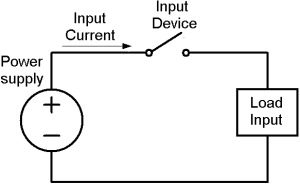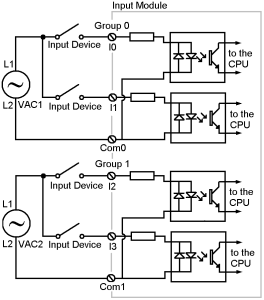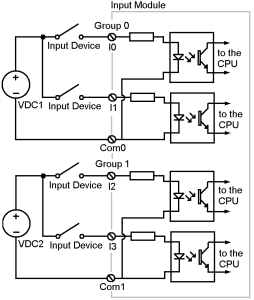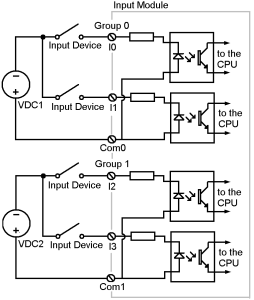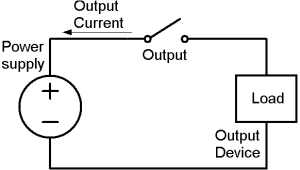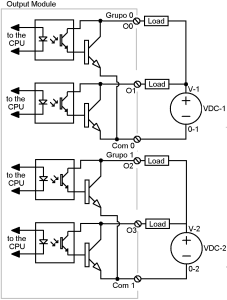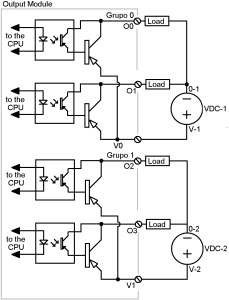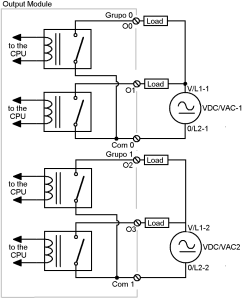There are a great variety of input output (I/O) modules that allow the exchange of information between the PLC and the process.
Input modules send information of the process state to the PLC and output modules send information from PLC to the actuators that modify the process state.
Description of input output modules
The input output modules also are classified according to type of signal used, so we have digital modules and analog modules. The digital modules, also called discrete modules, use signals that have only two possible values, for example presence or absence of 120VAC. The most common signals, also called control voltage, are 120 VAC, 220 VAC and 24 VDC, but there are others less frequent.
| Input Output | Input | Output |
| Digital | 120 VAC | 120 VAC |
| 220 VAC | 220 VAC | |
| 24 VDC fuente | 24 VDC fuente | |
| 24 VDC sumidero | 24 VDC sumidero | |
| Relé | ||
| Analog | 4-20 mA | 4-20 mA |
| 0-10 VDC | 0-10 VDC | |
| Termopares | ||
| RTD |
There are others types of input output modules with special applications as are high speed counter, weight, networks and control motion among others.
Input connections
The input connections follow the rules of any basic electric circuit; typically there are three elements: power supply, input devices (for example a sensor or a button) and the third element is the input in the input module. The power supply provides power to the input when the input device is closed. The next figure shows this.
The power supply, frequently, is going to be any of those shown in the table above. The input module is chosen according to the control voltage. The modules are designed such way that the input impedance limits the input current to a few milliamps. The flow of the input current can be in both directions, entering or leaving the module depending if the connection is for a circuit AC, DC sink or source respectively. The inputs in the module are grouped and each group has a common point. The voltage of each group can be different. If an input is not in a group, it is called isolated input. In the next figure is shown the more common connections.
It is important to note that when a sink input module is used, the input device must be source type and when a source input module is used, the input device must be sink type.
Output connections
The output connections are similar to the input connections, but now the switch element is the output and the output device (i.e. pilots, coil) is the load, as the figure shows.
The output module must be chosen according control voltage and the load, the more common modules are designed with triac for AC, transistor for DC and relay that can be used with AC and DC. The outputs also are grouped and those are not grouped are called isolated outputs.
Se debe escoger el módulo de salida según el voltaje de alimentación y la carga. Los módulos de salidas de uso son más frecuentes están diseñados con triac para voltajes AC, con transistor para voltajes DC y con relés que pueden manejar tanto voltajes AC como DC. Las salidas también se agrupan y las salidas que no estás agrupada se les denominan salidas aisladas.
